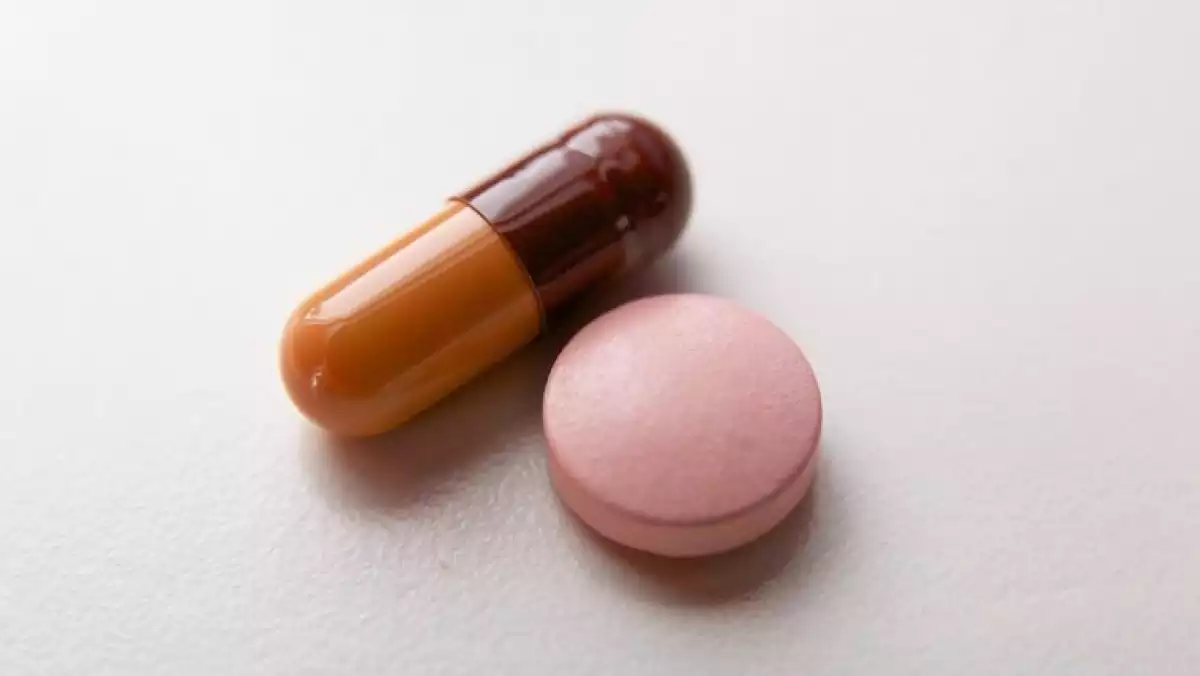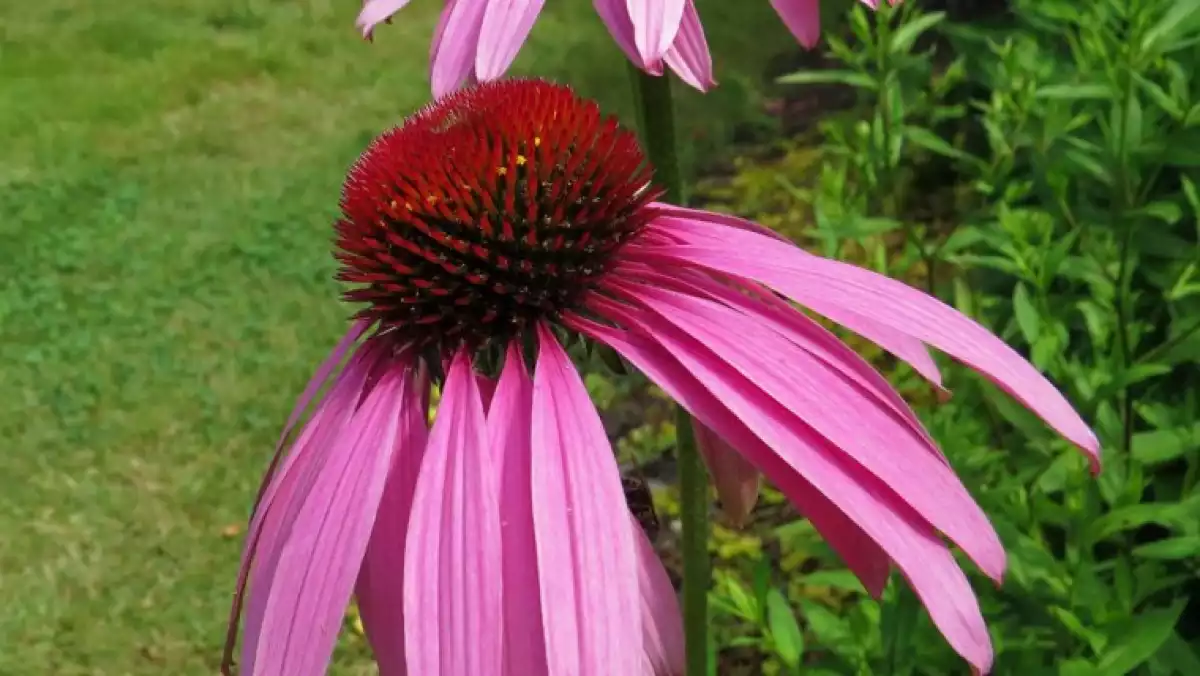
One of the most used medicinal plants due to its effects in the immune system is the echinacea. It is a plant whose main species is echinacea purpurea. Its administration does not need a medical prescription, and it is usually taken as short-term therapy, especially to increase defenses.
Like other herbs, the echinacea plant contains a significant number of active ingredients that have been studied and used for the treatment of different diseases.
To know the characteristics of this plant and what it is for, in this article, we will describe what echinacea is, what its primary uses, properties, and benefits are, and how to take it. We will also explain the possible side effects of consuming this plant and which are its main contraindications.
What is Echinacea?
Echinacea is an evergreen plant, from the Asteraceae family, whose stem can reach 45 centimeters high. The flowers this species has are usually purple or lavender, and its head is large, cone-shaped and a dark reddish color.
There are three main species of this plant: Echinacea purpurea, Echinacea angustifolia (narrow leaves) and Echinacea pallida (pale). All of them have the generic name "echinacea" and the active ingredients they have are distributed in:
- The flowering aerial part of Echinacea purpurea, whose axis is the stem
- The root of the Echinacea purpurea
- In the Echinacea angustifolia's root
- In the aerial part of Echinacea angustifolia, the axis of which is the stem
- In the Echinacea pallida's root
- In the aerial part of the Echinacea pallida, whose axis is the stem
This plant, originally from North-America, was introduced in Europe towards the first part of the XXth century. Currently, there are large crops of this plant mainly in the center of the North American continent, Mexico and Central Europe.
Apart from being a long-term traditional natural remedy, echinacea is also valued for its aesthetic beauty, being planted throughout the world in large numbers of gardens both artificial and natural.
History of the use of this plant
Echinacea was used for thousands of years by the inhabitants of North America to heal both war wounds and those caused by wild animals such as snakes, bears and other predators. It was also used to treat different diseases, from respiratory to digestive.
Throughout the centuries, the echinacea plant has been one of the natural remedies most used to treat other affections in the organism, and it was not until the arrival of the Europeans to the continent that its use was extended to the "Old World."
Around 1930, the first scientific studies were carried out in Germany to verify the effects of echinacea. This is how its benefits were incorporated into Western medicine in the mid-nineteenth century.
In the same context, other plants that have been historically used for the treatment of diseases are garlic and wormwood, for its antiparasitic properties; among many others.

How to take echinacea?
Echinacea, like all medicinal plants, can be taken in infusions or many other ways -for instance, in pills, capsules, drops, creams, ointments and all sorts of pharmacological products.
In other words, it is for internal use (extracts, infusions, powder) and also for external use (ointments, creams, oils). All these products are made from different parts of the plant, this is, the stem, the flower, and the root; and they can be obtained from the echinacea purpurea, the angustifolia or the pallida.
Like many medicinal plants, this one does not need a medical prescription, however, it is advisable not to disdain professional opinion and take into account the characteristics or needs of the person that is going to receive the treatment.
As it is a plant that is used for short-term therapies, it is recommended not to stretch on the treatment with echinacea for more than 2 months. On the other hand, like medicinal flowers, the effects of this plant are usually not perceived with a single intake, especially when consumed in tea or capsules. In such cases, it is recommended to use it for at least 2 weeks.
Echinacea side effects and contraindications
Although it is considered a miraculous remedy, there are some contraindications related to the use of the echinacea plant. The most important ones are pregnant women, breastfeeding women, people with some hepatic disease or with some allergic reactions.
On the other hand, among the main side effects of the excessive intake of this plant, there are gastrointestinal and allergic symptoms. As with other medicinal plants, the adverse effects reported from taking this herb are mild, although they have also been little studied.
Echinacea benefits and uses
Echinacea has different properties and health benefits, not only for human beings but also for other species. Many people believe that the intake of this medicinal plant can help with many types of problems.
And also, as it is a highly used remedy, its effects have been studied by science. In the following lines, we are going to mention 8 echinacea benefits and uses.
1. It protects the immune system
One of the main benefits is the strengthening and preservation of the immune system. It helps to regenerate and reproduce some types of white blood cells, which are an essential part of the immune system. We can get many health benefits from this trait.
To try this, an investigation conducted a trial with young rats who were given echinacea along with food. The result was a significant increase in white blood cells in the bloodstream over two weeks.
The same increase in immune response has been investigated with pigs and poultry, especially in the purpurea species. This has also been analyzed in humans and from different approaches.
2. Antiviral activity
Another main echinacea health benefit is its antiviral activity. This means that it can face different kinds of virus. For example, influenza, bird flu, and swine flu.
This has been specially investigated in the case of Echinacea purpurea extract, whose effect is the inhibition of several strains that cause these viruses, as well as the inhibition of some viruses that generate resistance to different drugs.
On the other hand, the antiviral effect of echinacea in the case of Rhinovirus infections has been questioned. Mainly, when it comes to the root and when the process of extraction of the active ingredients has been carried out with carbon dioxide and alcohol at 60% or 20%.

3. Treat cold symptoms
Echinacea also helps to treat colds or mild flu-like processes, as well as to reduce their common symptoms (fever, joint pain, fatigue).
The European Scientific Cooperative on Phytotherapy (ESCOP) recommends the use of the aerial part and the root of the Echinacea purpurea, and the root of both the pallida and angustifolia type to treat recurrent infections of the upper airways, this is, the symptom of a common cold.
On the other hand, the European Medicines Agency (EMA) also recommends using this plant in the prevention and supportive treatment of these symptoms. Specifically the root of Echinacea purpurea, angustifolia, and pallida.
4. Prevents disease and increases defenses
The consumption of echinacea can avoid the appearance or spreading of some diseases, for instance, some skin diseases and specific infections caused by a virus.
It prevents the pathogen from spreading in our organism. This is probably due to the active ingredients this plant contains, which derive from its main components: caffeic acid and alchemicals.
They are both organic compounds present in the root of the echinacea, and they have stimulant effects in the immune system. This is why it is said that it increases the defenses in our organism.
5. Supportive treatment for infections
Taking echinacea regularly can also be good to treat and prevent the appearance of different infections. Some examples are infections in the respiratory system, the urinary system, those caused after some cuts or lesions, in the gums, the ear, genital, and herpes, among others.
The European Scientific Cooperative on Phytotherapy (ESCOP) recommends the use of the Echinacea purpurea in the treatment of infections of the urogenital tract.
This can be administered orally, for example, in capsules or extract.
6. Healing and antiseptic action
The different species of echinacea have a healing and antiseptic action that can be useful as a supportive treatment for some wounds. For instance, in the case of closed and clean wounds, the washing of the remaining infusion herb can be used.
In the case of an open or infected wound, such as an ulcer, compresses may be used. Other plants that have the same effect are walnut, calendula, sanicle, and chamomile.

7. Anti-inflammatory effect
Concerning the previous part, echinacea is used in the case of blows, wounds, and injuries, mainly to reduce their inflammation.
This is especially true for mild inflammations and can be treated externally (with ointments) or internally (taking infusions, tablets or extract). It is important to remember that this is supportive treatment, i.e., it probably requires complementary medical treatment.
8. To treat skin
There are other echinacea benefits among which we find the treatment of mosquito bites, hemorrhoids, acne, ulcers, to sum up, of minor skin wounds.
The European Medicines Agency (EMA) recommends taking an extract of the Echinacea purpurea and angustifolia root as a supportive treatment in the disappearance of acne spots and pimples.
The aerial part of the purpurea type is indicated for superficial skin wounds and mild warts, especially those of viral origin. In this case, it should not be taken orally, but administered topically using an ointment.
- Original article in viviendolasalud.com: Equinácea: propiedades, beneficios y para qué sirve
References
Barnes J., Anderson L., A., Gibbons S. & Phillipson J. D. (2005). Echinacea species (Echinacea angustifolia (DC.) Hell., Echinacea pallida (Nutt.) Nutt., Echinacea purpurea (L.) Moench): a review of their chemistry, pharmacology and clinical properties. J Pharm Pharmacol. 57 (8): 929–54.
Bernardini, C. (2017). La equinacea. Fortalece el sistema inmunitario. Revista Integral, 446: 84-88.
Böhmer, B., Salisch, H., Paulicks, B. y Roth, F.X. (2009). Echinacea purpurea as a potential immunostimulatory feed additive in laying hens and fattening pigs by intermittent application. Livestock Science, 122(1): 81-85.
Cundell, D., Matrone, M., Ratajczak, P. & Pierce, J. (2003). The effect of arterial parts of Echinacea on the circulating white cell levels and selected immune functions of the aging male. International Immunopharmacology, 3: 1041-1048.
Equinacea (2016). Vademecum. Plantas Medicinales. Fitoterapia.net. Recuperado 28 de diciembre de 2018. Disponible en https://www.fitoterapia.net/vademecum/plantas/index.html?planta=301#
Getino Mamet., B.S., Da Rocha, G., Federica, S. y Carlos, S. (2016). Fitoterapia: una alternativa terapéutica en la producción porcina. Tesina de la orientación en producción animal presentada para optar al grado de veterinaria. Recuperado 28 de diciembre de 2018. Disponible en http://ridaa.unicen.edu.ar/xmlui/bitstream/handle/123456789/735/GETINO%20MAMET,%20BRENDA.pdf?sequence=1
Llor-Vila, C. (2006). La equinácea no es efectiva ni en la profilaxis ni en el tratamiento de la infección por Rhinovirus. Formación Médica Continuada en Atención Primaria, 13(6): 345.
López, P. y García, E. (2012). Fitoterapia basica y podológica/Basic phytotherapy and podiatry. Revista Internacional de Ciencias Podológicas, 6(1): 29-50.
